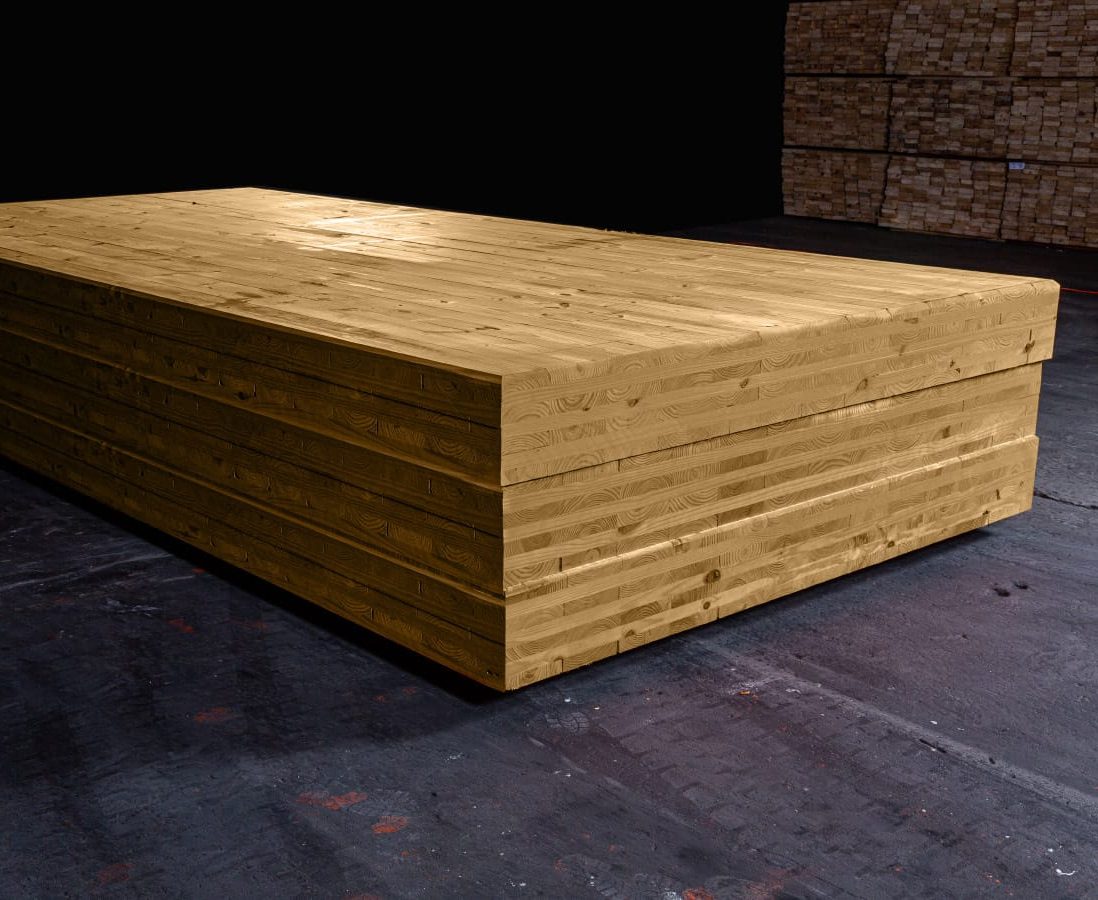
Mass Timber For The Masses: Making Sustainable Building Affordable
The construction industry is becoming increasingly aware of its environmental impact – as it accounts for roughly 40% of global carbon emissions. A shift toward sustainable materials is essential, and mass timber provides a great opportunity. However, questions remain: how do we make it more affordable and accessible for projects of all types, budgets and sizes?
Through smart design, collaborative approaches, and scalable solutions, mass timber can be a practical choice for diverse applications that enable projects to be both sustainable and cost-effective, while supporting domestic forestry and manufacturing.
Why Mass Timber Matters
Mass timber—encompassing engineered wood products such as Cross-Laminated Timber (CLT), and Glulam—is transforming the construction landscape. These materials offer significant advantages: strength, aesthetic appeal, and a dramatically lower carbon footprint compared to traditional materials like steel and concrete. Mass timber products sequester carbon, contributing positively to the environment by storing atmospheric CO₂ absorbed by trees during their growth cycle. This carbon remains locked within the wood for the lifetime of the building, reducing overall emissions and helping mitigate climate change.
However, the perception of mass timber as a premium option often limits its use to large-scale or high-budget projects. Efforts to overcome this barrier are essential for expanding its role in sustainable construction.
At Sterling, we’re on a mission to make Mass Timber for the Masses. Now, this is not just a catchy phrase—it’s a call to action. By addressing cost challenges, advancing efficient design techniques, and fostering collaboration, the construction industry can ensure that this sustainable material becomes widely adopted. Making mass timber accessible to a broader audience is key to achieving its full potential as a cornerstone of modern, regenerative building practices.
Smarter Design for Greater Affordability
The key to affordability lies in efficiency. By standardizing components and adopting modular construction techniques, we can minimize waste and streamline production. Early collaboration among architects, engineers, and builders ensures designs are optimized to maximize the benefits of mass timber while controlling costs.
One example is the integration of Structural Insulated Panels (SIPs) with mass timber building packages. This approach not only improves energy efficiency but also accelerates installation, reducing both labor and on site waste. Such strategies make sustainable construction a practical option for developers aiming to build responsibly.
Scaling Solutions for Diverse Projects
Affordability is not just about cutting costs; it’s also about scaling solutions for a variety of project types. Across residential, industrial and commercial building types, repeatable design modules and efficient logistics have shown that mass timber can meet diverse construction needs.
Take our Vineyard View Apartments project as an example. This workforce housing initiative leveraged repeatable designs and modular construction techniques to achieve cost-effective, sustainable results. The project highlights how mass timber can address both environmental and financial priorities, making it a model for similar developments in the future.
The Role of Collaboration
Collaboration across the construction industry is essential to making mass timber accessible. Early-stage partnerships with designers, seamless coordination with suppliers, and clear communication with contractors ensure projects are both efficient and effective. Success requires everyone involved—architects, engineers, manufacturers, and builders—to come together with a shared vision, fostering innovation and driving widespread adoption of mass timber solutions.
Industry organizations also play a vital role in driving affordability. For instance, groups like the American Wood Council , Sustainable Forestry Initiative and the SIPA: Structural Insulated Panel Association advocate for policies and incentives that lower barriers to adoption. By working together, industry stakeholders can create pathways for sustainable materials like mass timber to become mainstream.
Building a Sustainable Future Together
Mass timber holds the potential to revolutionize the construction industry and the built environment, offering an opportunity to build more responsibly without compromising on functionality. By focusing on innovation, collaboration, and scalability, we can transform mass timber from a niche material into a practical choice for all.
Sustainability in construction is no longer a luxury; it is a necessity. Through smarter design, collective efforts, and a commitment to accessibility, the construction community is making mass timber for the masses a reality. At Sterling Structural , we’re committed to making mass timber not just an ground-breaking choice, but an affordable one. Together, we can build a future that supports forest stewardship, strong woodland economies and domestic manufacuturing to enable Mass Timber for the Masses.